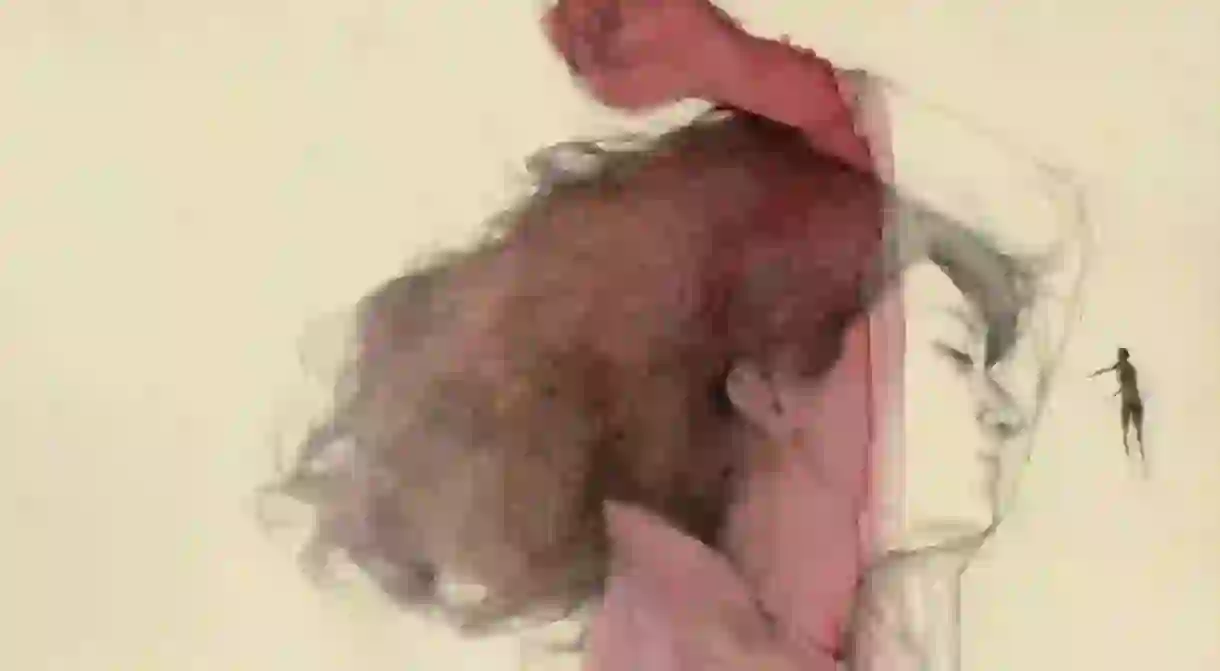An Interview With Artist And Illustrator Elia Mervi

Originally from Madrid, artist Elia Mervi, today, resides in the town of Santi on the coast of Portugal where she draws inspiration from the woods and seaside that surround her to create her mostly graphite and watercolor-based illustrations. She has been commissioned to work on a variety of projects including posters for award-winning movies and animated illustrations for the Game of Thrones series. We asked her about her career so far and what she sees for the future.
Elia, could you tell us a little bit about your background and how you got into drawing? Is it something you have always done?
Yes, I’ve always been known as ‘the girl who draws.’ It really has been very important to me, to express myself and to escape into new worlds. Necessary for my survival, I would even say.

How would you describe your illustrations in three words?
Inner. Seeking. Melancholy.

What kind of projects have you worked on recently? What was the most challenging? The most rewarding?
I just finished working with HBO for Game of Thrones for a second time. It is always a very challenging project; the deadlines are very strict and always require many drawings and shots to be done. But after all, it’s work. It’s like saying ‘one, two, three’; you just have to follow the routine and be disciplined.
The most challenging project I’ve worked on recently is my own project called ‘Quiet Resilience.’ It’s required a constant seeking of my personal style and experimenting with new ways to express myself and what I want to say through the fantastic women who inspire me and are the subject matter of the project.
It is not just about finding inspiring women (painters, poets, scientists); there is a deeper process at work, trying to find the perfect way to draw that particular woman. And sometimes this becomes a frustration… This project is an ongoing challenge every day.

When someone commissions a project from you, what’s the first thing you do? Where do you start?
I start by finding my inspiration for that particular project. In order to do so, I always ask the client about their own inspiration. I ask them for images, texts, colors, words… anything that can define the idea. Only then do I start my sketches.
You mention drawing inspiration from the creative power of women. What is it exactly that inspires you? And how?
Well, once someone asked Nick Cave about his muses. He answered that having a muse feels like too much ethereal and far from us.
I always remember this phrase because when I heard it, I finally discovered how to answer the question ‘Why do women inspire you?’. The answer is because they are real women: they lived here, they died here, and they still live in some way. They continue inspiring many people, women and men, around the world. Their strength was expressed through their minds and ideas, in the acts they had to carry out in order to be free, to express themselves and fight against a patriarchal world. And that is real.
This idea brings me a lot of inspiration. I want to draw their faces, their hands; I want to know them through the drawing.

Color seems to have such a special place in your drawings. How do you choose the colors for each illustration?
Well, this part of the illustration is absolutely abstract. I can’t explain. It just…the color comes. Of course, sometimes it’s necessary to use some specific color to express a particular feeling. But most of the time, I don’t think about it; I just use the color I feel for the illustration.

Some of your illustrations have been used in video animations. How do you see the future of illustration in the digital era? Are you optimistic?
I’m really quite pessimistic here.
Well, not so much in terms of animation. The field of animation can be a great tool to combine with traditional illustration; in fact, you got great things if you work with both.
I’m pessimistic about digital illustration. I fear that we are going more and more inside the computer screen. It may seem like you have the world inside there, but you don’t. You just have an easy and fake world. I’m not saying that digital illustration is easy; I know you can be a professional, and it’s very very hard work, and there are many great digital illustrators. But for me, you lose something if you paint on the screen. You lose the opportunity to touch, to feel something real that is the paper or whatever you use to make your art and express yourself.

Any final thoughts?
In the end, art and illustration are about expression, about being to express ourselves truly… so we have to be able to see, or at least try to see, what the artist themselves wanted to express. Because when an artist, painter, artisan, illustrator or musician does something which is real for them, something with their heart and soul, you can really feel it. And you can be sure that it will bring you some kind of inspiration, and that inspiration will transform into another thing/idea/thought that you will use at the same time to express yourself, or perhaps simply to live… it’s like a constant feedback of inspiration. And it began million of years ago.













